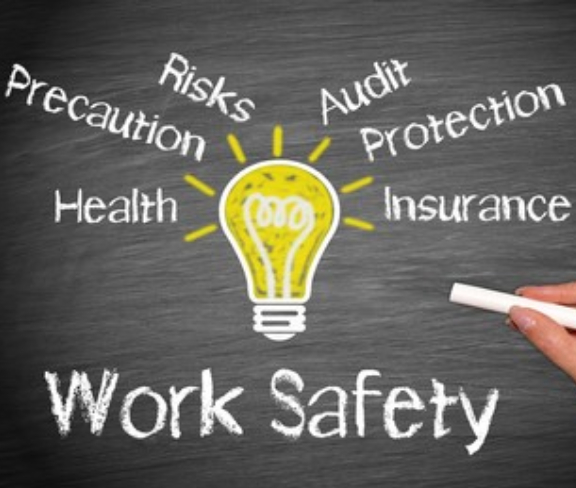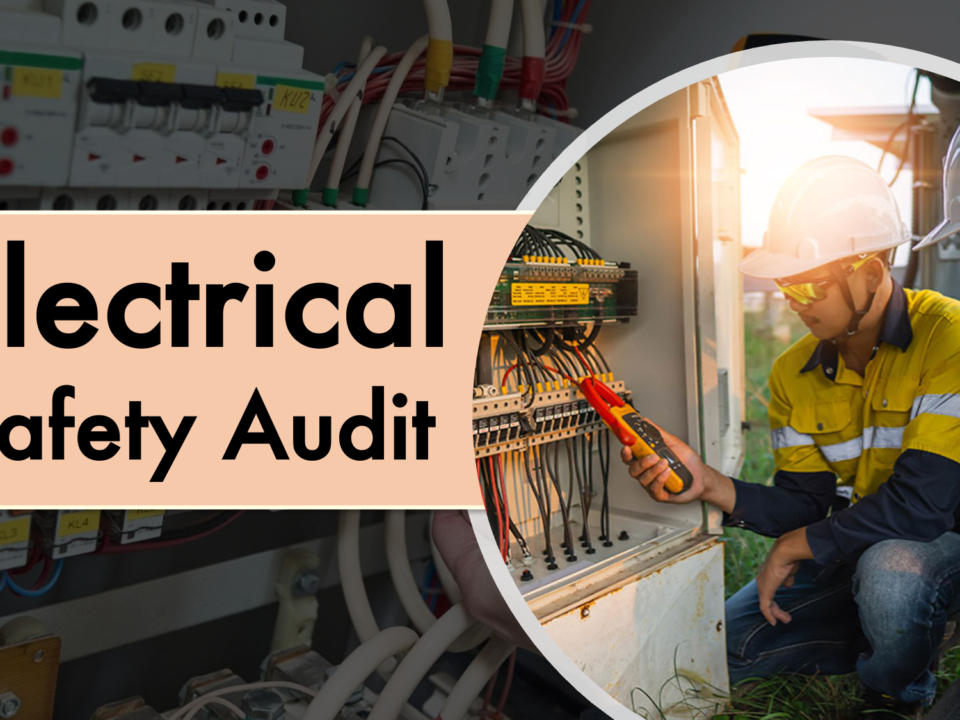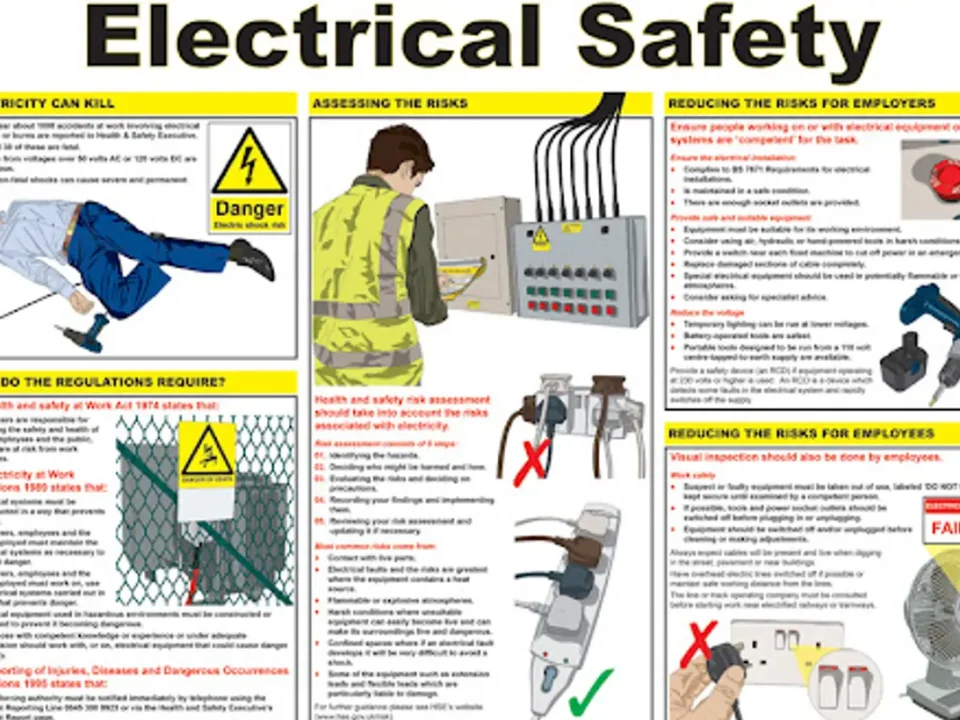Electrical Safety Audit
Behavior-Based Safety: The Pros and Cons
May 21, 2024
Behavior-Based Safety Training: A Foundation for Success
May 23, 2024Electrical safety is of utmost importance in any setting, be it a residential, commercial, or industrial environment. From preventing electrical fires to reducing the risk of electric shock, ensuring that electrical systems are safe and in compliance with regulations is crucial for the well-being of individuals and the smooth functioning of operations.
In this comprehensive article, we delve into the world of electrical safety audits – a systematic evaluation process that helps identify potential hazards and implement necessary measures to mitigate risks. Whether you are a facility manager, an electrical engineer, or simply someone concerned about safety at home or work, this article will equip you with valuable insights into conducting an effective electrical safety audit.
The Importance of Electrical Safety
When it comes to our daily lives, electricity plays a crucial role in powering our homes, workplaces, and essential appliances. However, amidst the convenience and comfort that electricity brings, it is important not to overlook the potential dangers it poses. Electrical safety is of paramount importance as it ensures the protection of both individuals and property from harm caused by electrical hazards.
One cannot underestimate the significance of electrical safety in safeguarding lives. Faulty wiring, damaged equipment, or improper electrical installations can lead to severe injuries such as electric shocks, burns, or even fatal accidents. Moreover, electrical incidents can result in devastating fires that endanger lives and cause extensive damage to infrastructure. By prioritizing electrical safety measures and conducting regular audits, we can mitigate these risks and create a safe environment for everyone.
Understanding Electrical Hazards
Electricity is a powerful force that has become an indispensable part of our daily lives. However, it is crucial to acknowledge the potential dangers associated with electrical systems and the hazards they can pose. Understanding electrical hazards is the first step towards ensuring effective electrical safety in any setting.
One of the primary electrical hazards is electric shock, which occurs when a person comes into direct contact with an energized source. This can result in severe injuries or even prove fatal. Another significant danger is arc flash, a sudden release of energy caused by an electric arc between two conductive materials. Arc flashes are capable of producing intense heat and light and can lead to devastating fire accidents.
Conducting an Electrical Safety Audit: Step-by-Step Guide
Conducting an electrical safety audit is a crucial step toward ensuring the well-being of your organization and its personnel. It involves a systematic and comprehensive evaluation of all electrical systems, equipment, and practices within a facility. By following this step-by-step guide, you can effectively identify potential hazards, implement corrective measures, and create a safer environment.
1. Begin by assembling a qualified team consisting of electrical engineers, technicians, and safety professionals. Their expertise will be instrumental in conducting a thorough audit.
2. Review relevant regulations and standards to ensure compliance with legal requirements for electrical safety.
3. Inspect the electrical infrastructure, including wiring systems, distribution panels, transformers, and grounding mechanisms. Assess their condition for signs of wear or damage.
4. Examine all electrical equipment such as motors, switches, circuit breakers, and control panels. Verify their proper installation and functionality.
5. Evaluate the effectiveness of protective devices such as fuses or residual current devices (RCDs) in preventing electric shock or fire hazards.
6. Conduct thermal imaging scans to detect potential overheating issues in cables or equipment that may lead to failures or fires.
7. Analyze maintenance records to ensure regular inspections have been performed on critical components and that any reported issues have been adequately addressed.
8. Review documentation related to training programs on electrical safety provided to employees to ensure they are well-informed about proper procedures
In conclusion, following this comprehensive step-by-step guide for conducting an electrical safety
Assessing Electrical Systems and Components
When conducting an electrical safety audit, one of the crucial steps is assessing the electrical systems and components within a facility. This step involves a comprehensive examination of the entire electrical infrastructure, including power distribution systems, wiring, circuit breakers, switches, outlets, and other equipment.
The assessment begins by inspecting the overall condition of these components to ensure they are in good working order and free from any visible defects or damage. Additionally, it involves verifying that the electrical system is compliant with relevant codes and standards. Inspections may include checking for proper grounding and bonding, adequate insulation levels, appropriate wire sizes, and effective protection mechanisms.
An optimistic perspective on this task lies in recognizing that through a thorough assessment of electrical systems and components, potential hazards can be identified before they cause harm. This proactive approach allows for necessary repairs or upgrades to be implemented promptly, thus ensuring a safer environment for both employees and visitors. By addressing any issues discovered during the assessment stage, businesses can significantly reduce the risk of electrical accidents or fires occurring on their premises.
Identifying Potential Electrical Hazards
When conducting an electrical safety audit, one of the crucial steps is identifying potential electrical hazards. This involves a comprehensive assessment of the electrical systems and components within a building or facility. By meticulously examining the infrastructure, wiring, equipment, and connections, potential risks can be identified before they lead to accidents or failures.
The process of identifying hazards requires a keen eye for detail and a deep understanding of electrical systems. Common issues that might be uncovered include inadequate grounding, faulty wiring, overloading circuits, outdated equipment, exposed live wires, or improperly installed fixtures. By pinpointing these potential hazards, necessary measures can be put in place to mitigate risks and ensure the safety of both individuals and property.
Implementing Safety Measures
Once potential electrical hazards have been identified during the audit, it is crucial to implement safety measures to mitigate these risks. This proactive approach ensures a safer working environment for everyone involved. The implementation phase involves a series of steps aimed at eliminating or reducing the likelihood of electrical accidents.
One effective safety measure is to establish clear procedures for handling and operating electrical equipment. By creating standardized protocols, organizations can ensure that employees are well-informed about safe practices when working with electricity. Regular training sessions should be conducted to educate staff on the proper use of equipment and protective gear, emphasizing the importance of following safety guidelines at all times.
To further enhance electrical safety, it is essential to enforce strict compliance with regulations and standards. By adhering to industry codes and guidelines, organizations demonstrate their commitment to creating a secure environment. Implementing regular inspections and audits helps identify any deviations from established standards, allowing corrective actions to be taken promptly.
In addition, implementing safety measures includes maintaining an updated inventory of electrical assets and ensuring regular maintenance activities are performed. Routine inspections should be carried out on switches, circuit breakers, wires, and other components vulnerable to wear and tear or damage. Timely repairs or replacements will not only prevent accidents but also extend the lifespan of equipment.
By implementing comprehensive safety measures throughout an organization’s electrical infrastructure, potential hazards can be effectively eliminated or minimized. This proactive approach not only safeguards individuals from harm but also boosts productivity by instilling confidence in employees that their workplace prioritizes their well-being.
Prioritizing Electrical Safety Upgrades
In the realm of electrical safety, it is crucial to prioritize upgrades that mitigate potential hazards and ensure a secure environment. Identifying areas that require improvement allows for strategic planning and efficient allocation of resources. A comprehensive electrical safety audit acts as a guiding compass, helping organizations prioritize upgrades based on risk severity, regulatory compliance, and long-term benefits.
During the process of prioritization, it is imperative to assess risks objectively and make informed decisions. Focus on addressing critical issues that pose immediate threats to personnel safety or have the potential to cause significant damage. By tackling high-risk areas promptly, organizations can proactively safeguard their workforce while minimizing the likelihood of costly accidents or downtime.
Training for Electrical Safety
When it comes to electrical safety, knowledge is power – quite literally. In order to ensure a safe working environment, it is essential to provide comprehensive training and education on electrical safety practices. This not only empowers employees with the knowledge to identify potential hazards but also equips them with the skills required to respond effectively in case of an emergency.
The training program should cover a wide range of topics, including basic electrical principles, safe work practices, proper use of personal protective equipment (PPE), and emergency procedures. It should be tailored to cater to different levels of expertise within the organization, from entry-level employees to experienced electricians. Additionally, incorporating hands-on practical exercises can enhance understanding and retention of the material.
Investing in ongoing education is crucial as well. With rapid advancements in technology and changes in safety standards, it’s important for employees to stay up-to-date with the latest industry developments. Regular workshops, seminars, and refresher courses can provide opportunities for continuous learning and skill development.
A positive approach towards training and education not only emphasizes compliance with safety regulations but also fosters a culture that values the well-being of individuals. By empowering employees with knowledge and skills, organizations can cultivate a sense of ownership and accountability when it comes to electrical safety. This ultimately leads to a more conscientious workforce that actively contributes towards maintaining a safe working environment for everyone involved.
Maintenance and Regular Inspections
Regular maintenance and inspections are the backbone of an effective electrical safety program. By conducting routine checks, potential hazards can be identified early on, preventing major accidents or disruptions. These inspections should encompass a wide range of components, including wiring systems, circuit breakers, outlets, switches, grounding systems, and electrical panels.
During a maintenance inspection, qualified personnel should meticulously examine and test electrical equipment to ensure their proper functionality. This includes checking for loose connections, damaged wiring or insulation, signs of overheating or corrosion, and any other issues that may compromise the safety of the system. Additionally, it is essential to keep detailed records of all maintenance activities for future reference and to track any patterns that may emerge.
Adhering to a regular inspection schedule not only helps prevent accidents but also increases the lifespan of electrical equipment through timely repairs and replacements. Furthermore, it instills confidence in employees or residents by assuring them that their safety is prioritized. With proper maintenance in place, organizations can operate with peace of mind knowing they have taken proactive measures to mitigate potential risks.
Building a Culture of Electrical Safety
Creating a culture of electrical safety within an organization is crucial for maintaining a safe working environment and preventing accidents. It goes beyond simply implementing safety measures; it involves instilling a mindset where every individual recognizes the importance of electrical safety and takes responsibility for their own actions.
One way to build this culture is through comprehensive training programs that educate employees about electrical hazards, safe practices, and emergency procedures. By providing employees with the knowledge and skills they need to identify potential risks and respond appropriately, you empower them to be active participants in maintaining a safe workplace.
In addition to training, it is essential to foster an open communication environment where employees feel comfortable reporting any electrical safety concerns or near misses. Encouraging regular dialogue about safety issues helps identify potential hazards before they escalate into emergencies. Furthermore, recognizing and rewarding individuals who prioritize electrical safety can reinforce positive behavior and motivate others to follow suit.
An organizational commitment to regularly reviewing and updating electrical safety protocols demonstrates the significance placed on this matter. Conducting periodic audits, inspections, and assessments further ensures that all systems are up-to-date and compliant with industry standards. By involving employees in these processes, their expertise can assist in identifying areas that need improvement or modification.
Ultimately, building a culture of electrical safety requires ongoing dedication from management alongside active engagement from all members of the organization. With consistent reinforcement of best practices, fostering open communication channels, and recognizing individual efforts towards ensuring electrical safety, companies can create an environment where everyone feels empowered to prioritize personal well-being as well as the collective welfare.
Conclusion
In conclusion, prioritizing electrical safety through regular audits is crucial in safeguarding both individuals and property from potential hazards. By implementing thorough assessment procedures, identifying potential risks, and investing in necessary upgrades, organizations can create a secure environment for everyone involved. Moreover, by fostering a culture of electrical safety through training and education, maintenance and inspections, we can ensure a continued commitment to preventing accidents and promoting a sense of well-being. Remember, when it comes to electrical safety, knowledge is power – so let’s empower ourselves to protect those around us.
With Best Wishes
Sanjeev Paruthi
TSM TheSafetyMaster® Private Limited
Unit No 221-451-452, SPL1/J, 2nd & 4th Floor, Sunsquare Plaza Complex, RIICO Chowk, Bhiwadi 301019, Rajasthan, India
Phone: +91 1493 22 0093
Mobile: +91 7665231743/9413882016
Email: info@thesafetymaster.com



